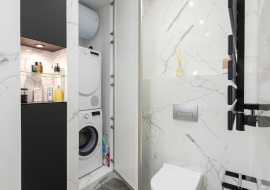
Energy class G: what does it mean and when is it beneficial?

Buying a home with energy rating G may seem like a bad idea at first, but with careful planning and targeted investment it can turn into an interesting opportunity. A lower initial cost provides the opportunity to invest in necessary renovations that not only improve living comfort, but also increase the value of the property over time. It's important to consider all variables, including future energy costs and potential government incentives for energy efficiency, before purchasing.
Is it profitable to buy a house with energy class G?
Buying a home with energy rating G may seem like an unattractive option, but there are various factors that can influence this decision. Energy class G is the lowest on the energy efficiency scale, as opposed to the most efficient class A, indicating a high level of energy consumption for heating, cooling and other needs.
However, depending on personal circumstances and investment intentions, this choice may have its advantages. For example, you can take advantage of the reconstruction bonus provided for 2024.
Energy class G: how much does it cost?
The cost of purchasing a home with an energy rating of G is generally lower compared to homes with a better energy classification. This price difference can be significant and attract buyers on a budget or investors interested in remodeling.
It is important to consider that the operating costs of a G-rated home will be higher due to higher energy bills. So even if the initial purchase cost is lower, operating costs can offset those savings over time.
How much does it cost compared to energy class A?
A house with energy class G has an overall energy efficiency rating equal to or greater than 3.50 EP. In practice, this means that heating, cooling, ventilation and hot water will require more than 160 kWh per square meter per year. The consumption is almost 10 times higher compared to class A houses, where consumption varies from 15 to 30 kWh per square meter.
The cost of a kWh is not fixed and depends on various factors, including the time of day and the energy supplier. To simplify, let's assume that the cost is 0.277 euros/kWh at a flat tariff, the annual cost for a house with class G will be 4709 euros, while for a house with class A it will be 692.5 euros, the difference is 4016.5 euros. This difference has increased due to rising energy prices, mainly due to the cost of gas.
Energy class G: what does it mean?
Energy class G represents the lowest level of energy efficiency. This means the building uses 3.5 times more energy than a Class A home. In practical terms, this can mean problems such as inadequate insulation, outdated heating and cooling systems, inefficient windows and doors, and a structure that easily loses heat. . Living in a Class G home means higher energy bills and lower living comfort, especially during the colder or hotter months.
In most cases, the assignment of energy class G is related to the year the building was built. Homes rated G are often older structures, built before energy efficiency regulations became strict. Typically, such houses were built before the 80s. Older buildings may have historical or architectural charm, but require more maintenance and renovation to improve energy efficiency and livability.
How you can improve your energy rating G Improving your home's energy rating G requires investment in targeted renovations, but the long-term benefits can be significant in terms of energy savings and increased property value. In addition, the renovation process may be supported by tax incentives such as eco-bonuses.
One of the first steps to improving energy efficiency is insulation.
This may include insulating the walls, roof and floors. Good insulation reduces heat loss in winter and keeps your home cool in summer. Older generation windows and doors are often energy inefficient. Replacing them with double or triple glazed windows can significantly reduce heat loss.
Also installing condensing boilers, heat pumps or underfloor heating systems can improve energy efficiency. Installing modern air conditioners can also help reduce energy consumption. In particular, installing solar photovoltaic or thermal panels can provide a home with renewable energy, reducing dependence on traditional energy sources and reducing energy bills. Installing mechanical ventilation control (VMC) systems can improve indoor air quality and help maintain a comfortable climate without wasting energy.
Finally, using smart technology to control heating, lighting and appliances can optimize energy consumption and improve overall energy efficiency.
News

23/08/2024
Why are the fuses blown?

21/08/2024
Life in Castelletto

19/08/2024
How to Stop a Cat from Running Away

09/08/2024
6 Most Beautiful Beaches in Genoa

08/08/2024
How is Ferragosto celebrated in Italy?

05/08/2024